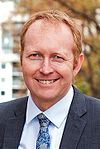Local government elections in Australia
2016 Victorian local elections|
|
|
|
First party
|
Second party
|
Third party
|
|
|
IND
|

|
SOC
|
| Leader
|
N/A
|
Greg Barber
|
No leader
|
| Party
|
Independents
|
Greens
|
The Socialists
|
| Last election
|
|
18 seats
|
Did not exist
|
| Seats before
|
|
16
|
1
|
| Seats won
|
|
29
|
1
|
| Seat change
|
|
 13 13
|

|
|
|
|
Fourth party
|
Fifth party
|
Sixth party
|
|
|
SA
|
RUAP
|
LDP
|
| Leader
|
No leader
|
None
|
No leader
|
| Party
|
Socialist Alliance
|
Rise Up
|
Liberal Democrats
|
| Last election
|
1 seat
|
1 seat
|
0
|
| Seats before
|
1
|
1
|
0
|
| Seats won
|
1
|
1
|
1
|
| Seat change
|

|

|
 1 1
|
|
|
|
Seventh party
|
|
|
|
CA
|
|
| Leader
|
Russell Bate
|
|
| Party
|
Country Alliance
|
|
| Last election
|
1
|
|
| Seats before
|
1
|
|
| Seats won
|
0
|
|
| Seat change
|
 1 1
|
|
|
The 2016 Victorian local elections were held on 22 October 2016 to elect the councils of the 79 local government areas in Victoria, Australia.[1][2]
The elections saw the largest-ever amount of Greens councillors elected, with the party increasing their local government representatives from 17 to 29.[3] The Labor Party and Liberal Party did not endorse any candidates.[4]
